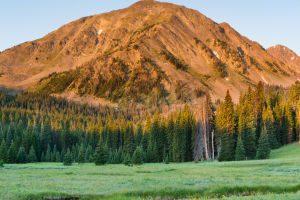Wind turbines have become iconic symbols of renewable energy.
You see them dotting the landscape, silently spinning as they convert wind into electricity.
But how exactly do they transform something as elusive as a breeze into usable power for our homes?
It’s a fascinating process that blends the power of nature with cutting-edge technology, offering a clean alternative to fossil fuels.
The Basics: How Wind Turbines Work
At first glance, wind turbines seem simple. They have large blades that catch the wind, and they spin. But what happens next is where the magic of energy conversion begins.
When wind hits the blades of a wind turbine, it creates lift, similar to how an airplane’s wings work. The wind's force causes the blades to rotate, and this spinning motion is transferred to a rotor. This rotor is connected to a gearbox, which increases the rotational speed of the shaft. This shaft is linked to a generator, and as it turns, it produces electricity.
To break it down:
- Wind blows on the blades, making them spin.
- The spinning blades turn a rotor.
- The rotor spins a shaft, connected to a generator.
- The generator converts this motion into electricity.
Why Wind is the Perfect Power Source
Wind energy is renewable, meaning it doesn’t run out. As long as the wind blows, turbines can generate power. Unlike fossil fuels, which pollute the air and contribute to climate change, wind turbines create electricity without emitting harmful gases.
Wind energy is also abundant. According to the U.S. Department of Energy, the U.S. alone could generate more than 10 times its electricity needs just from wind power. Coastal areas, open plains, and offshore locations tend to have stronger, more consistent winds, making them ideal for turbine placement.
Turbine Size and Power Output
Not all wind turbines are the same size. The larger the blades, the more wind they can capture, and the more electricity they can generate. Modern wind turbines can reach heights of up to 600 feet, with blades stretching 200 feet long. These larger turbines can generate enough electricity to power thousands of homes annually.
However, small wind turbines also play a role, especially in rural areas or off-grid homes. These smaller versions are typically used for residential energy needs or on farms, providing a personal source of clean energy.
The Challenges: Can Wind Always Be Trusted?
As promising as wind energy is, there are some challenges. The most obvious one is that wind is not always consistent. Some days are calm, with little to no breeze, meaning turbines won’t generate as much power. To counter this, many energy systems store excess energy generated on windy days for use during calm periods. Wind farms are also spread out across various regions, ensuring that even if one area isn’t windy, others can pick up the slack.
Another challenge is the initial cost of building wind turbines. The process of manufacturing, transporting, and installing turbines is expensive. However, once operational, turbines have relatively low maintenance costs and can last 20 years or more, making them a worthwhile investment over time.
The Environmental Impact
One of the main reasons for the rise of wind turbines is their minimal environmental impact compared to traditional energy sources. Wind energy doesn't pollute the air, release greenhouse gases, or require water for cooling, as some power plants do. Wind turbines occupy less land than fossil fuel plants, and while their construction can impact local wildlife, measures are often taken to minimize harm, such as siting turbines away from migratory bird paths.
Moreover, as technology improves, turbines are becoming more efficient, quieter, and more wildlife-friendly, further reducing their environmental footprint.
The Future of Wind Power
Wind power is expected to play a crucial role in the global shift toward renewable energy. Innovations like floating offshore wind farms, which can be placed in deeper waters with stronger winds, are expanding the possibilities. Countries worldwide are setting ambitious targets for wind energy as part of their clean energy goals, moving us closer to a sustainable future.
Wind turbines offer a promising, environmentally friendly solution to our growing energy needs. As technology continues to evolve, their efficiency and impact will only increase, making wind energy a key player in the global shift to renewables.


